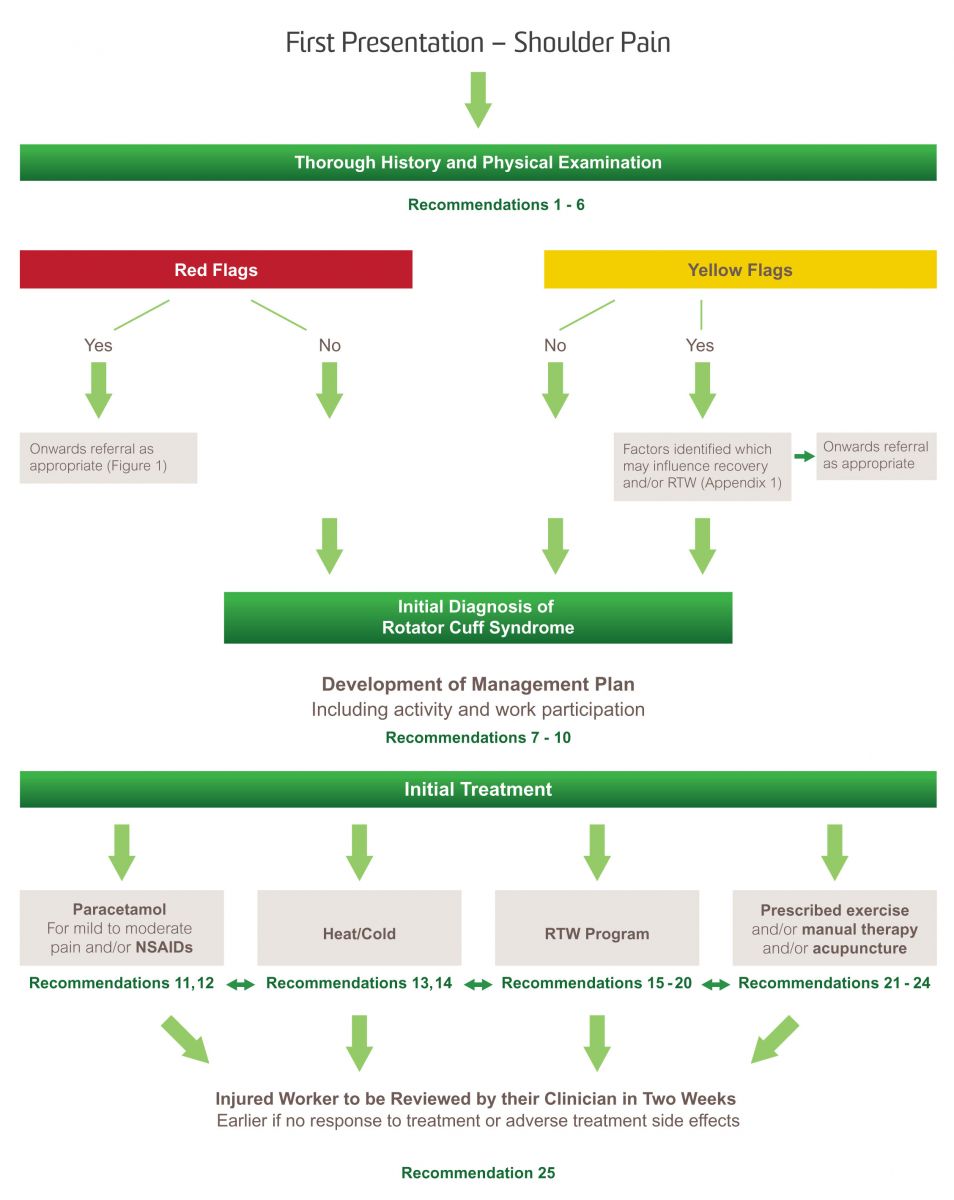Guidelines on shoulder rotator cuff problems

The recent guidelines on shoulder rotator cuff problems bring good medicine to a common problem.
There has been a significant rise in the number of shoulder claims across Australia over the last 15 years. Claims in some areas are up by 50%. This is over the same time period that a large section of manufacturing has been ‘off shored’. One might think there would be a reduction in shoulder injuries with a reduction in many of the highly repetitive tasks performed in the manufacturing sector.
One possible reason for this is the increased use of scans. A significant proportion of the community has abnormal results on their shoulder scans, whether they have shoulder complaints or not. The often quoted statistic is that 50% of 50 year olds have a partial thickness tear noted on the shoulder ultrasound, whether they have pain or not. Up to 90% of people, with or without shoulder pain, have so-called thickening of the bursa reported.
How would scans make a difference in the number of shoulder claims? It’s much the same as scans of the spine. Someone has pain, they are sent for a scan, the scan shows an abnormality, so the patient and doctor and employer have heightened concerns about the condition. There is more treatment, more concern, more surgery.
And ultrasounds are a major part of this problem. Ultrasounds have low levels of specificity. Read more here. That means there is a higher level of conditions being diagnosed when there is not actually a problem present. When it comes to shoulders, MRI scans are more reliable.
Which brings us to the flowcharts presented in the shoulder guidelines. The recommendation is not to undertake scans at the patient’s first presentation. The recommendation is that scans are only performed if the condition is not improving over time. And many shoulder problems settle over a month or two.
Unfortunately, it takes longer to explain to a patient they don’t need an investigation than to write the form and arrange a scan. We are a long way off from this approach becoming routine, but the guidelines provide a good start.
We recommend you look at the guidelines in full, to understand the various recommendations.


Published 28 July, 2013 | Updated 30 July, 2013

